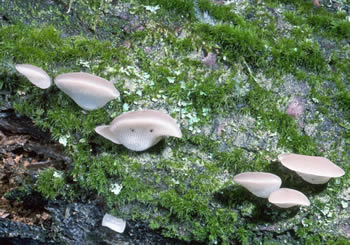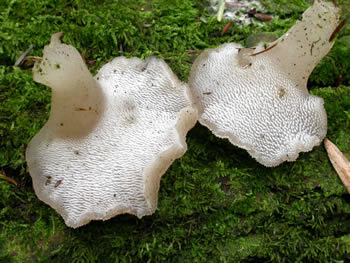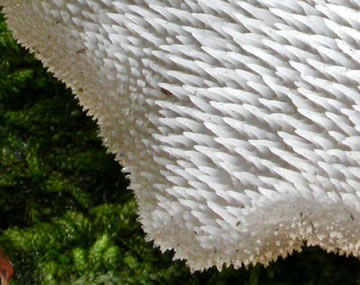Pseudohydnum gelatinosum
Scientific name: Pseudohydnum gelatinosum (Scop.) P.
Karst.
Derivation of name: Gelatinosum means "jelly-like."
Synonyms: Tremellodon gelatinosum (Scop.) Pers.
Common name(s): Jelly tooth; Jelly tongue; Jelly hedgehog;
Jelly false tooth.
Phylum: Basidiomycota
Order: Tremellales
Family: Exidiaceae
Occurrence on wood substrate: Saprobic; solitary,
scattered or grouped on decayed conifer logs and stumps,
especially hemlock (Tsuga canadensis); September through
November.
Dimensions: Fruit bodies 2.5-7.5 cm wide; stipes (if present)
up to 5 cm long, lateral to central when growing on a
horizontal surface.
Description: Upper surface is whitish to grayish or brownish
and minutely velvety to smooth. The entire fruit body feels
rubbery-gelatinous and appears somewhat
translucent. The
fertile undersurface is covered with soft,
pendulous, whitish
spines.
Edibility: Edible but bland.
Comments: This is the only toothed jelly fungus.
More information at MushroomExpert.com

Figure 1. Pseudohydnum gelatinosum on a decaying
hemlock log. Photo © Gary Emberger.

Figure 2. Scattered specimens on a decaying log.
Photo © William Roody.

Figure 3. Flipping the specimens over reveals surfaces
covered
by soft, whitish teeth. Photo © Gary Emberger.

Figure 4. The soft, translucent, pendulous spines are a
striking
feature of this species. Photo © Gary Emberger.